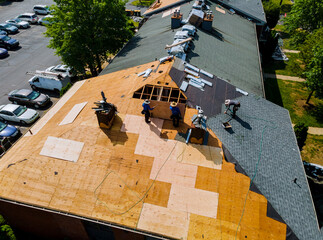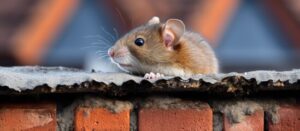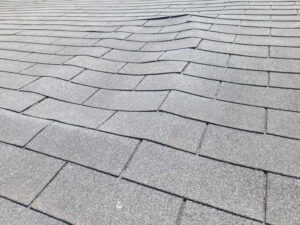Roof Installation Riverview plays a vital role in ensuring the protection and durability of a structure. A properly installed roof serves as the first line of defense against environmental elements, safeguarding the interior from rain, wind, and temperature fluctuations.
The quality of roof installation determines not only the longevity of the roof itself but also the overall structural integrity and comfort of the building. A secure and well-installed roof prevents water infiltration, minimizes heat loss, and enhances the energy efficiency of a property, contributing to lower utility costs and improved indoor comfort. The process of roof installation requires a combination of precise planning, skilled craftsmanship, and the use of high-quality materials to achieve a durable and visually appealing result.
The process of roof installation begins with a thorough assessment of the structure and the existing roof, if applicable. Professional installers evaluate the condition of the roof deck, support structures, and insulation to identify any potential weaknesses or damage that may need to be addressed before proceeding. Proper preparation is essential to create a stable and secure foundation for the new roof. If the underlying structure is compromised or weakened, repairs and reinforcements are made to ensure that the new roof can withstand the weight and stress it will be subjected to over time. Attention to detail during this initial phase helps prevent future problems, such as sagging or leaks, that could arise from an unstable foundation.
Selecting the right roofing material is a key aspect of roof installation. The choice of material impacts not only the appearance of the roof but also its durability, weather resistance, and maintenance requirements. Different roofing materials offer varying levels of protection against heat, moisture, and impact. Factors such as the local climate, architectural style of the building, and budget considerations influence the selection of roofing material. Some materials provide enhanced insulation properties, reducing heat transfer and improving the overall energy efficiency of the building. Others are designed to resist high winds, heavy rainfall, and hail, providing long-term protection against harsh weather conditions. Professional installers guide property owners in selecting the most suitable material based on functional and aesthetic preferences.
The installation process begins with the preparation of the roof deck and underlayment. The roof deck serves as the base layer that supports the roofing material, while the underlayment acts as a secondary barrier against moisture infiltration. High-quality underlayment materials enhance the waterproofing capabilities of the roof and prevent damage caused by condensation and humidity. Proper alignment and secure attachment of the underlayment are essential to create a smooth and even surface for the installation of the roofing material. Professional installers use specialized techniques to minimize gaps and overlaps, ensuring that the underlayment provides comprehensive coverage and protection.
The placement and securing of the roofing material require precision and expertise. Professional installers carefully position each section of the material to ensure proper alignment and an even appearance. Fasteners, adhesives, and sealing compounds are used to secure the material to the roof deck, preventing movement and displacement caused by wind and thermal expansion. Proper sealing and overlapping techniques create a watertight barrier that protects the interior of the building from leaks and moisture damage. Attention to detail during this phase ensures that the roofing material is installed uniformly and securely, enhancing both the functional and visual qualities of the roof.
Ventilation is a critical component of roof installation that contributes to the long-term performance and durability of the roof. Proper ventilation allows for the circulation of air beneath the roof deck, preventing the buildup of heat and moisture. Excess heat and moisture can cause premature deterioration of roofing materials and lead to problems such as mold growth, rot, and structural damage. Professional installers incorporate vents and airflow channels into the roof design to maintain a balanced and consistent airflow. This helps regulate indoor temperature, reduce the strain on heating and cooling systems, and extend the lifespan of the roofing materials.
Flashing and sealing are essential elements of roof installation that enhance the waterproofing and weather resistance of the roof. Flashing is installed around roof penetrations, such as chimneys, vents, and skylights, to prevent water infiltration at vulnerable points. High-quality sealants and adhesives are applied to create a secure and flexible bond that accommodates thermal expansion and contraction. Proper flashing and sealing techniques protect against leaks and water damage, ensuring that the roof remains secure and watertight even during heavy rainfall and extreme weather conditions.
The finishing touches of roof installation involve the installation of ridge caps, edge trim, and other decorative elements that enhance the overall appearance of the roof. Ridge caps provide additional protection to the highest points of the roof, preventing moisture infiltration and securing the edges of the roofing material. Edge trim and decorative details create a polished and cohesive look that complements the architectural style of the building. Professional installers carefully inspect the completed roof to verify that all components are securely attached and properly aligned. Any visible imperfections or inconsistencies are corrected to achieve a flawless and aesthetically pleasing result.
Energy efficiency is a key benefit of a professionally installed roof. Modern roofing materials and techniques are designed to reduce heat transfer, improve insulation, and minimize energy consumption. Reflective roofing materials and specialized coatings help reduce heat absorption, lowering cooling costs during warm weather. Insulated roofing systems prevent heat loss during colder months, reducing the need for heating and improving overall comfort. The combination of proper ventilation, insulation, and material selection enhances the energy efficiency of the building, contributing to long-term cost savings and environmental sustainability.
Safety and structural integrity are paramount considerations during roof installation. The weight and load distribution of the roofing material must be carefully calculated to prevent stress and deformation of the underlying structure. Professional installers assess the load-bearing capacity of the roof deck and support structures to ensure that the new roof can withstand the forces of wind, snow, and other environmental stresses. Reinforcements and support brackets are added as needed to provide additional stability and strength. Compliance with local building codes and safety regulations is strictly followed to ensure that the installation meets industry standards and performance requirements.
Maintenance and longevity are important factors that influence the overall value of a roof installation. High-quality materials and professional installation techniques contribute to the durability and resilience of the roof. Proper sealing and weatherproofing prevent damage caused by moisture, UV exposure, and temperature fluctuations. Routine inspections and maintenance help identify and address potential issues before they escalate into costly repairs. Professional installers provide guidance on maintenance practices, such as cleaning gutters, checking for loose or damaged shingles, and ensuring proper ventilation. Well-maintained roofs retain their functional and aesthetic qualities for decades, providing long-term protection and value.
The aesthetic appeal of a professionally installed roof enhances the overall visual impact and market value of a property. The choice of roofing material, color, and design influences the architectural style and curb appeal of the building. Modern roofing options offer a wide range of design possibilities, from sleek and contemporary styles to traditional and rustic finishes. Professional installers work closely with property owners to select roofing materials and designs that complement the existing structure and create a harmonious and attractive exterior. The seamless integration of the roof with the overall design vision enhances the property’s overall charm and character.
Environmental sustainability is an increasingly important consideration in roof installation. Eco-friendly roofing materials and installation techniques reduce the environmental impact of construction and improve the building’s overall energy efficiency. The use of recycled and sustainable materials minimizes waste and conserves natural resources. Green roofing systems, which incorporate vegetation and natural insulation, provide additional environmental benefits by improving air quality, reducing heat absorption, and promoting biodiversity. Professional installers are knowledgeable about sustainable roofing options and work with property owners to select environmentally responsible solutions.
Professional roof installation provides peace of mind and long-term value for property owners. The combination of skilled craftsmanship, high-quality materials, and advanced installation techniques results in a roof that delivers reliable performance, enhanced energy efficiency, and lasting aesthetic appeal. A well-installed roof protects the building from environmental elements, improves indoor comfort, and reduces maintenance costs over time. By understanding the complexities and benefits of roof installation, property owners can make informed decisions that maximize the functional and visual impact of their investment.





 Prevention
Prevention


